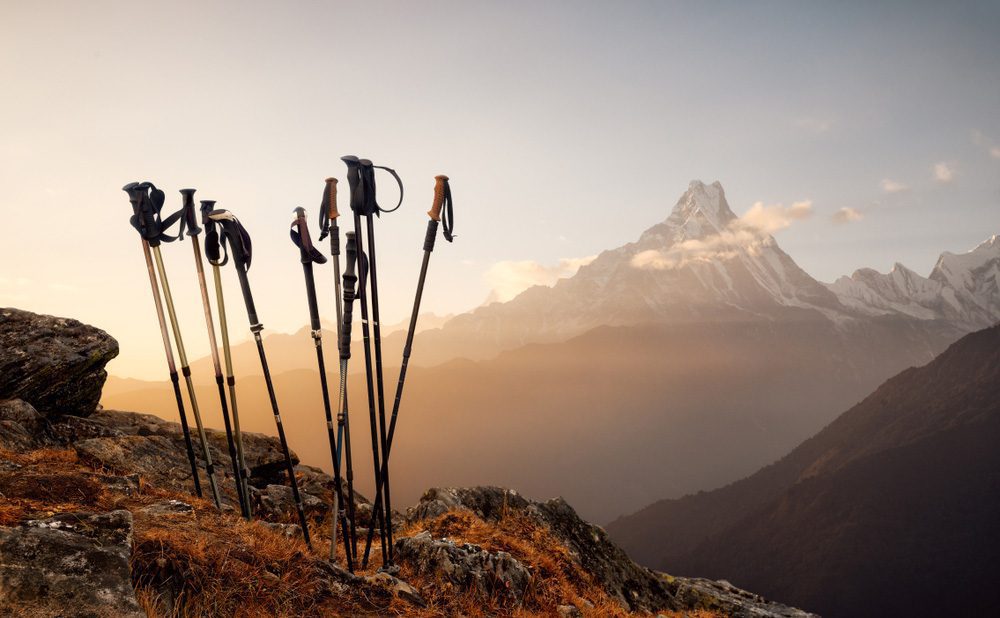Hiking and trekking poles can reduce your body weight’s burden and make it more comfortable to go further and for a longer period of time if you’re planning to explore the great outdoors on foot. If you want to make your experience better, poles might be the way to do it.Hiking poles have a lot of other uses that we’ll get into. Also, we’ll tell you about the 10 best hiking poles you can buy.
Why Do You Need Trekking and Hiking Poles?
Your outdoor experience can be greatly improved by using trekking or hiking poles. There are many reasons to buy a pair of poles, but here are some of the most important ones:
-Taking the pressure off your knees and ankles and absorbing the shock when going up steep hills.
-Increasing your speed when walking, especially downhill.
-Improving your posture so you walk with your back straighter can help you avoid back pain and strengthen the muscles that support your spine.
-By working out your upper body, you burn more calories and make your legs, arms, shoulders, and neck muscles stronger.
-Balance training, which is especially important for staying upright on rough or difficult terrain.
-Getting stronger and being able to go longer without getting tired.
-Getting better at and moving faster through soft snow.
-Sharing your weight, including the weight of your backpack, and letting it spread out more evenly across your body.
-When you split the work between your legs and arms, it’s easier and more fun to walk uphill.
-Before stepping out onto an unstable area, you should test it.
Bottom Line:
Taking a pair of poles with you on most types of trips can be very helpful. Getting the right poles for your needs can help you go faster, take weight off your knees, and improve your performance as a whole. They are very important for a good hiking trip.
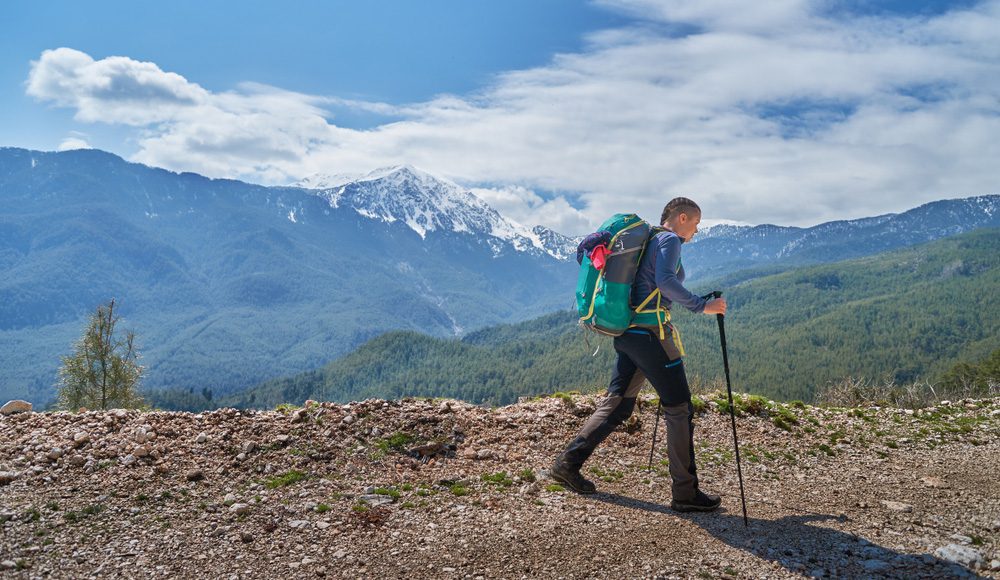 What to Think About Before Buying Trekking and Hiking Poles
What to Think About Before Buying Trekking and Hiking Poles
Even though most trekking poles offer the same kinds of benefits and help on the trail, there are some things you should think about before you buy.
Comfort
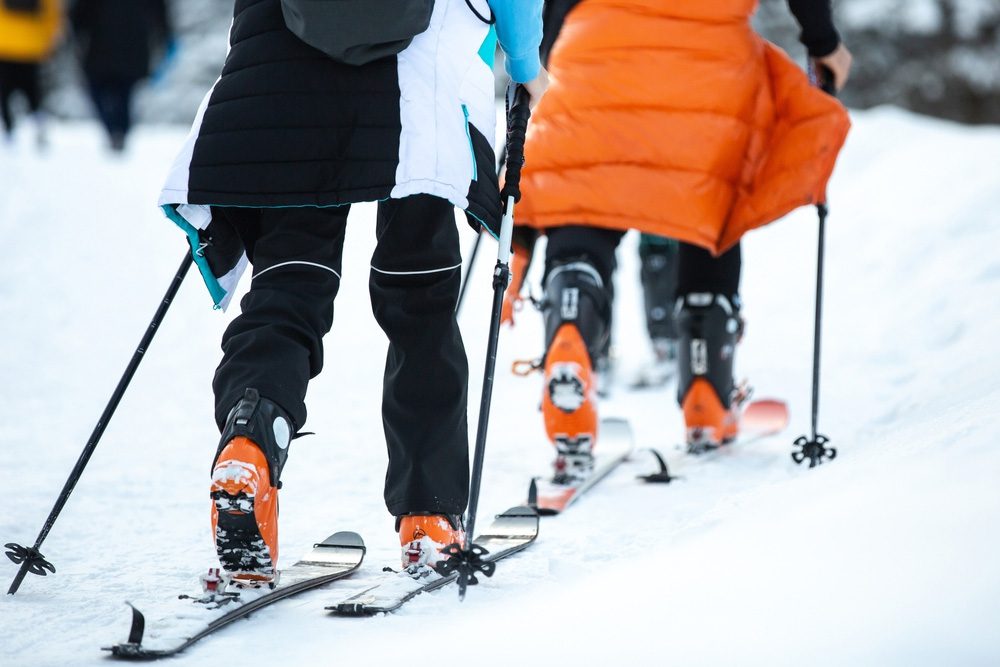 The purpose of your walking poles is to improve your experience, so they must be comfortable to use for the entire distance.
The purpose of your walking poles is to improve your experience, so they must be comfortable to use for the entire distance.
This requires that you seek out grips that are comfortable to grasp while also keeping your hands from perspiring excessively, which might otherwise lead to blisters. The poles also need to be the right length so that you don’t have to bend over or walk in a bad way.
Along with having shock-absorbing elements that can help minimize jarring in your back and elbows as you walk, they also need to have baskets that are tiny enough to prevent them from becoming trapped between pebbles and debris.
Weight
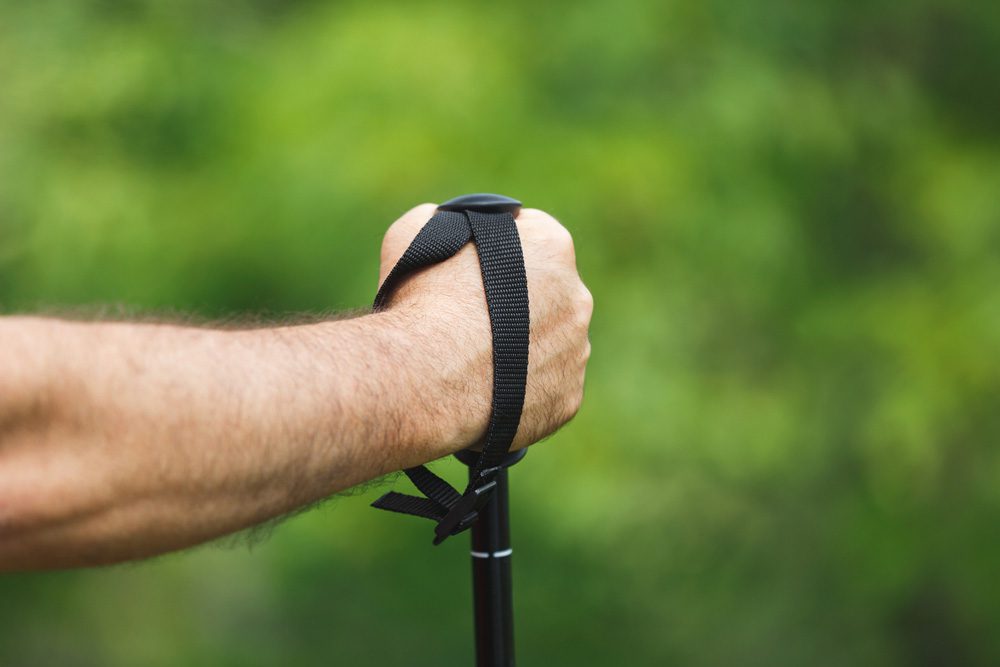 Most of the time, you will need poles if you want to walk long distances. Because of this, your poles will need to be as light as possible to make sure they are easy to carry for miles.
Most of the time, you will need poles if you want to walk long distances. Because of this, your poles will need to be as light as possible to make sure they are easy to carry for miles.
For example, poles made of carbon fiber are very light but still strong enough to last a long time. Make sure to try out a few poles in person before you decide on one.
Even though no one wants a pole that is too heavy and slows them down, some may feel that their pole is too light and not strong enough to hold their weight or feel stable enough in rough weather or terrain.
Size
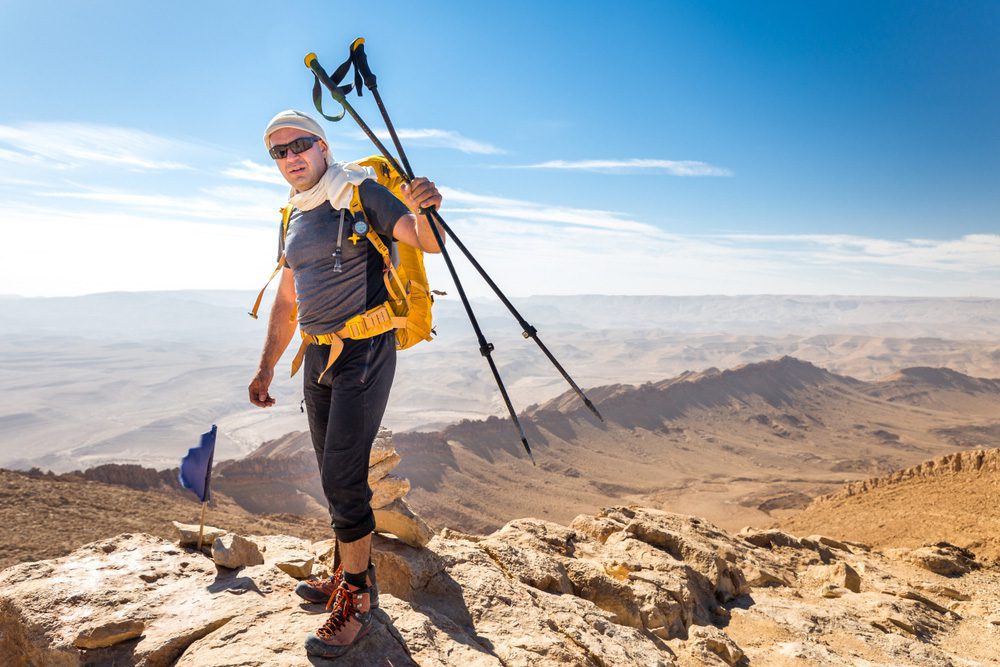 The ideal height for your frame will often be specified by the particular types and models of walking poles. As a general rule, though, each pole you use should be the right length so that your hand can lightly grip the handle and your elbow stays at a 90-degree angle to the floor. The top of your pole’s handle should be about where your waist or hips are.
The ideal height for your frame will often be specified by the particular types and models of walking poles. As a general rule, though, each pole you use should be the right length so that your hand can lightly grip the handle and your elbow stays at a 90-degree angle to the floor. The top of your pole’s handle should be about where your waist or hips are.
Hot Tip: Some walkers find that the height of the pole needs to be changed for different terrains. If you prefer to change your pole height as you go, extendable poles may be a better choice.
Durability
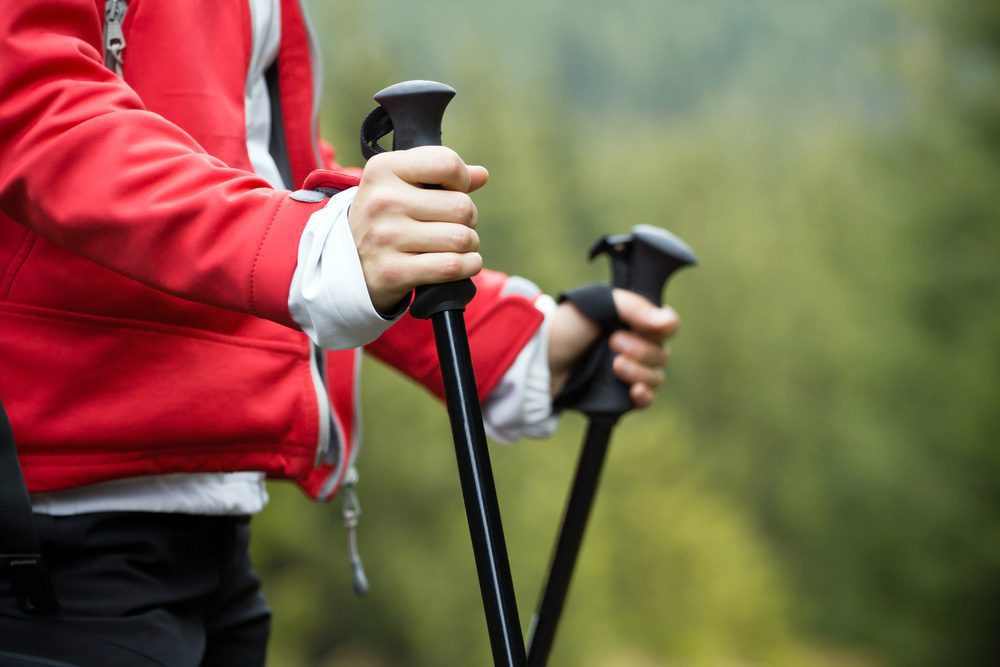 You want your hiking poles to be strong enough to hold your weight and hard enough to keep you standing up for miles.
You want your hiking poles to be strong enough to hold your weight and hard enough to keep you standing up for miles.
In general, a rod with a bigger diameter and a thinner wall will be stronger and bend more under pressure than one with a wider diameter and a thicker wall. How well your poles hold up over time will also depend on what they are made of.
Materials
 Carbon fiber poles cost more and could break if bent the wrong way. Aluminum poles cost less and are more likely to bend instead of break if they get caught on something.
Carbon fiber poles cost more and could break if bent the wrong way. Aluminum poles cost less and are more likely to bend instead of break if they get caught on something.
Many manufacturers make poles with a mix of aluminum and carbon fiber so that they are both strong and light. This helps prevent dents, cracks, and unwanted breaks while still giving you the support you need on the trails.
Design
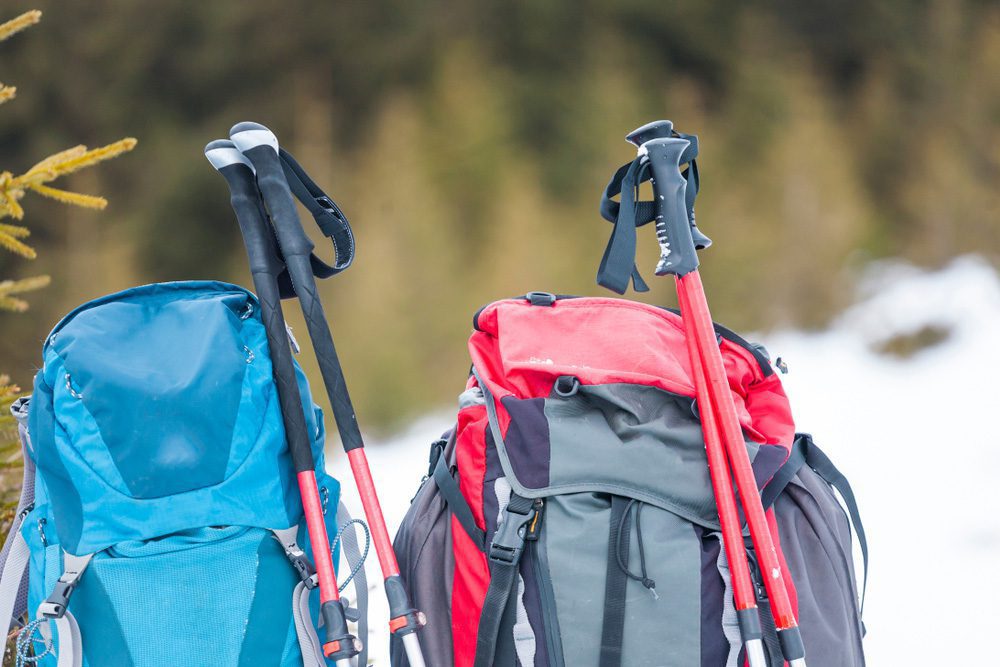 Backpackers and hikers usually choose poles that come in three pieces or that fold up because they are easier to store when not in use. There are also 2-piece trekking poles and poles with fixed lengths. The poles you buy should not only support you when you walk but also be easy to carry and put back together quickly when you need them.
Backpackers and hikers usually choose poles that come in three pieces or that fold up because they are easier to store when not in use. There are also 2-piece trekking poles and poles with fixed lengths. The poles you buy should not only support you when you walk but also be easy to carry and put back together quickly when you need them.
Locking System and Adjustments
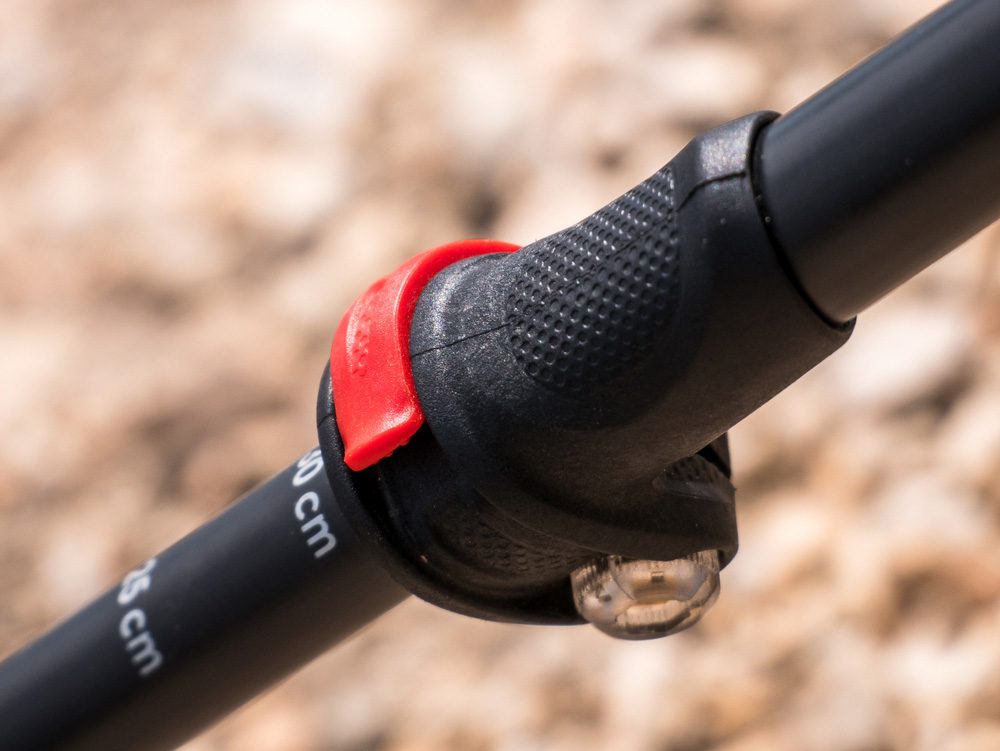 The length of trekking poles can usually be changed so that they are easy to use on different types of terrain. Push-button locks are straightforward to install and come with a push-button release, while external lever locks employ clamp-like mechanisms that are adjustable even when wearing gloves.
The length of trekking poles can usually be changed so that they are easy to use on different types of terrain. Push-button locks are straightforward to install and come with a push-button release, while external lever locks employ clamp-like mechanisms that are adjustable even when wearing gloves.
Twist locks with an expander and screw setup for added durability are also a possibility, as are combination locks, which may help strike a compromise between long-term strength and usability.
Tip: No matter which type you choose, keep in mind that most poles will need to be moved over time.


